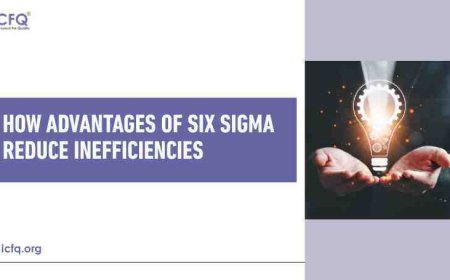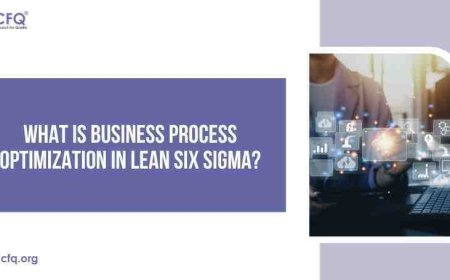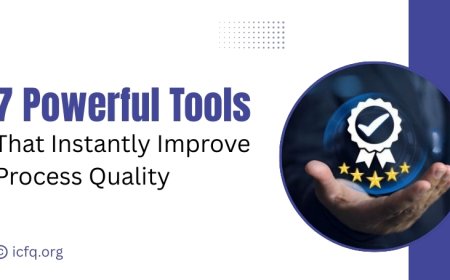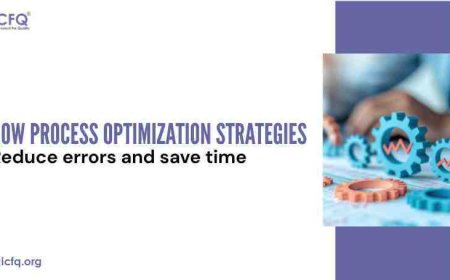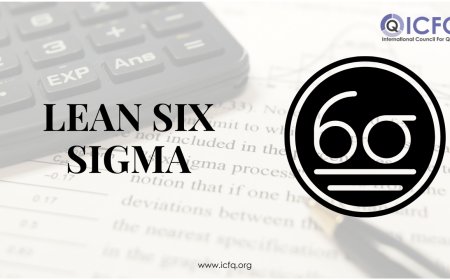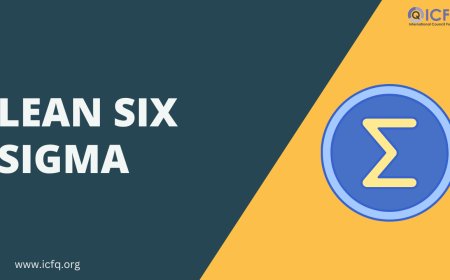Lean vs Six Sigma: Where Does PDCA Fit?
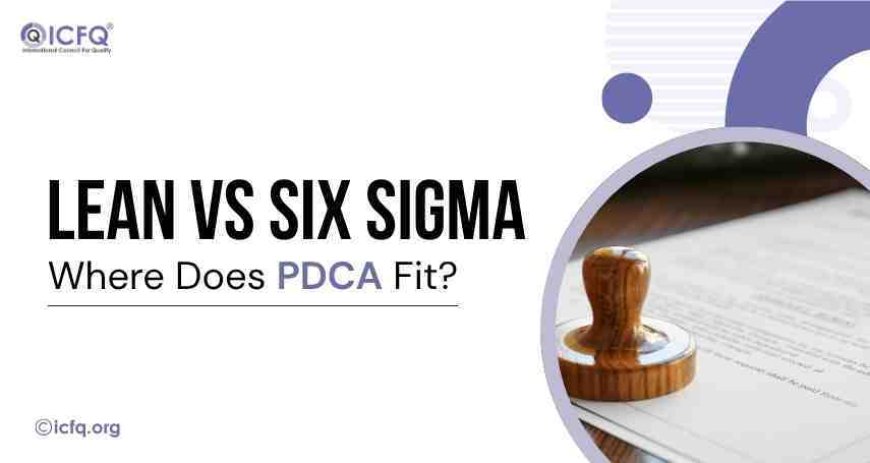
Every business wants to improve faster, smarter, and better. Two popular ways to do this are Lean and Six Sigma. Both help improve processes, reduce errors, and save time and money. A tool that often comes up with both methods is PDCA (Plan-Do-Check-Act).
Many businesses ask: “Where does PDCA fit? Is it Lean or Six Sigma?”
To answer this, let’s look closely at what Lean, Six Sigma, and PDCA really mean, and how they connect with each other in practical use.
What is Lean?
Lean is a structured approach that helps organizations work smarter by removing waste, increasing efficiency, and speeding up processes. It focuses on delivering maximum value to the customer with the least amount of resources. While Lean started in manufacturing, it is now applied across industries such as services, logistics, healthcare, education, and technology.
The main idea of Lean is simple: do more with less, without compromising on quality. By reducing waste and improving flow, Lean allows teams to save time, cut costs, and deliver better results to customers.
What is Six Sigma?
Six Sigma is a data-driven method that focuses on reducing errors and improving quality. Its goal is to make processes more consistent and reliable by identifying and eliminating the causes of defects.
The DMAIC Cycle in Six Sigma
-
Define: Clearly state the problem or goal.
-
Measure: Collect data to understand the current situation.
-
Analyze: Identify root causes of problems.
-
Improve: Implement solutions to address the causes.
-
Control: Monitor and sustain the improvements.
Six Sigma aims to reduce defects to a very low level, leading to measurable quality improvements.
What is PDCA?
The PDCA (Plan-Do-Check-Act) cycle is a four-step method for continuous improvement. It is simple, adaptable, and widely used in many certification systems.
The Four Steps of PDCA
-
Plan: Identify a problem, set goals, and create a plan.
-
Do: Implement the plan on a small scale.
-
Check: Measure and analyze the results.
-
Act: Standardize the successful solution or adjust for further improvement.
PDCA and Certification
PDCA is often built into international standards such as quality management, environmental management, and information security management. Certification bodies encourage PDCA because it ensures:
-
Ongoing compliance with requirements.
-
Continuous improvement of systems and processes.
-
Stronger governance and risk management.
Where Does PDCA Fit?
PDCA is not limited to Lean or Six Sigma, it is a universal cycle that supports both.
PDCA in Lean
Lean encourages small, continuous improvements. PDCA provides the practical steps to carry them out:
-
Plan: Identify waste.
-
Do: Test new methods to reduce waste.
-
Check: Measure improvements in speed and efficiency.
-
Act: Apply the successful method across the process.
PDCA in Six Sigma
Six Sigma focuses on reducing variation and errors. PDCA helps maintain improvements once projects are completed:
-
Plan: Review goals and risk areas.
-
Do: Apply solutions tested in the DMAIC phase.
-
Check: Monitor defect levels.
-
Act: Standardize new practices and continue monitoring.
PDCA as a Bridge
In organizations that use Lean Six Sigma together, PDCA acts as the bridge, supporting continuous learning, compliance, and certification readiness.
Benefits of Using PDCA with Lean and Six Sigma
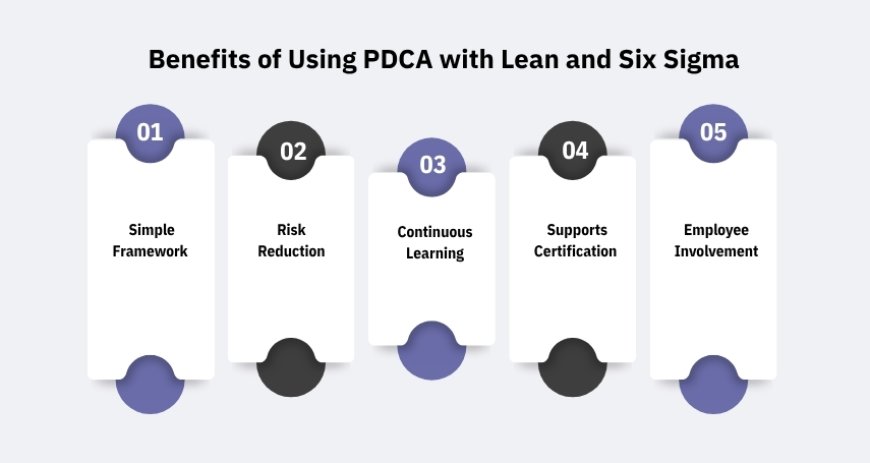
1. Simple Framework
The PDCA cycle in Total Quality Management is straightforward to understand. It can be applied in any department, whether it’s operations, finance, HR, IT, or customer service. The cycle provides a clear step-by-step method for planning, testing, and improving processes, making it practical for both small teams and large organizations.
2. Risk Reduction
One of the strongest benefits of PDCA is that it reduces risk. Instead of making large changes all at once, PDCA encourages testing improvements on a small scale during the “Do” phase. If the test does not work as expected, adjustments can be made before rolling it out fully. This prevents costly mistakes and helps organizations avoid major disruptions.
3. Continuous Learning
PDCA naturally promotes a learning culture. Every cycle allows teams to reflect on results during the “Check” stage and identify what worked and what did not. Over time, this mindset of reviewing and refining leads to constant progress. Employees become more skilled at problem-solving, and the organization adapts more effectively to change.
4. Supports Certification
Many quality and process improvement certifications, such as ISO standards, require organizations to show systematic improvement. Using PDCA demonstrates compliance with these requirements because it is a recognized and structured method.
5. Employee Involvement
PDCA is not limited to top management, it invites participation at every level. Employees closest to the work often have the best insights into inefficiencies. By involving them in the cycle, organizations can gather fresh ideas, increase engagement, and build a sense of ownership over improvements.
Practical Example of PDCA in Action
Imagine a company facing frequent delays in order delivery:
-
Plan: Review the order process and identify bottlenecks.
-
Do: Test a new system with one team.
-
Check: Compare delivery times before and after the change.
-
Act: Expand the new system across the organization.
By repeating this cycle, the company reduces waste (Lean), lowers errors (Six Sigma), and shows a strong commitment to continuous improvement, something highly valued in certification audits.
Lean, Six Sigma, and PDCA are all powerful tools for driving continuous improvement. Lean focuses on eliminating waste and creating smooth processes, while Six Sigma concentrates on reducing errors and improving quality through data-driven decisions. PDCA fits perfectly alongside both methods, serving as a practical cycle that guides teams through planning, testing, checking, and acting on improvements.
In the end, improvement is not a one-time project, it’s an ongoing journey. PDCA ensures that this journey stays on track, helping businesses move forward with clarity, confidence, and results.
